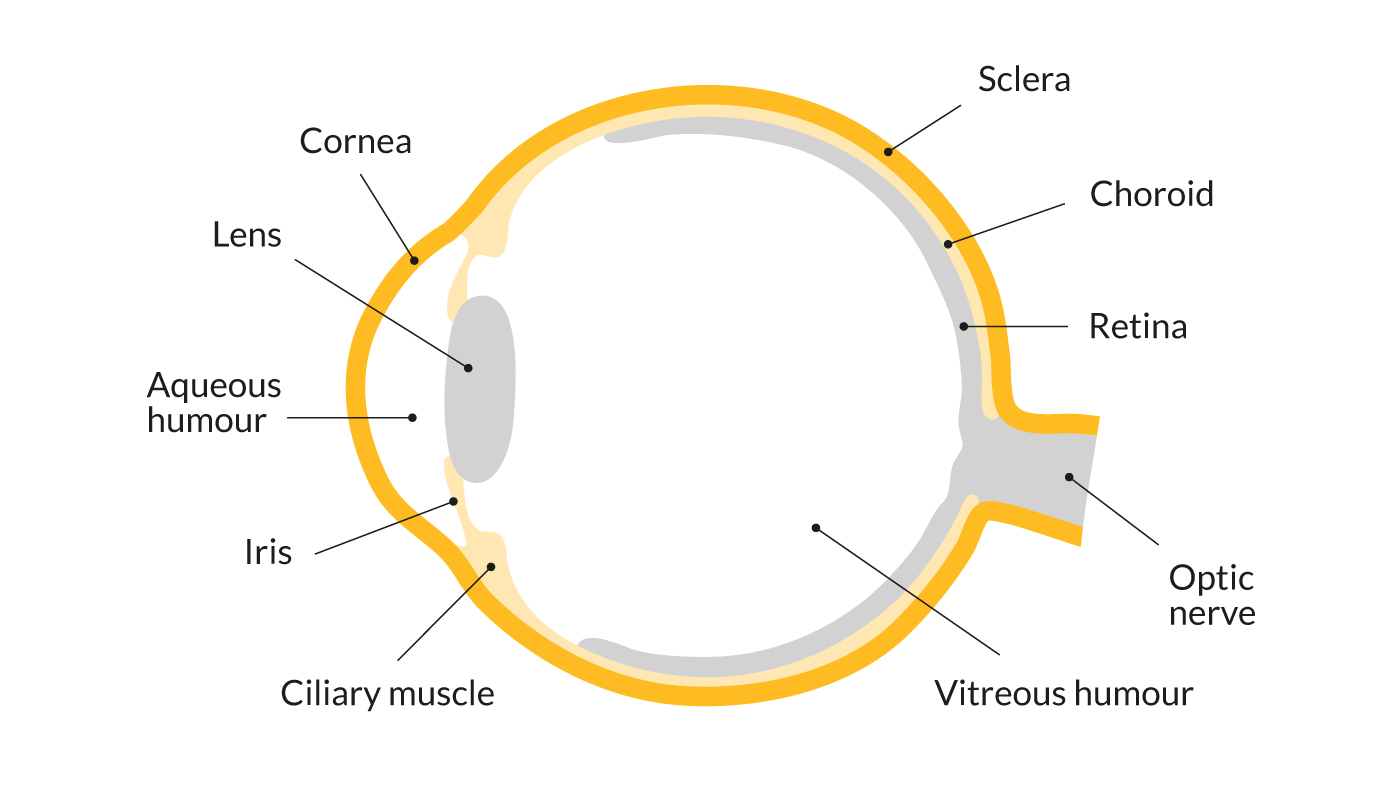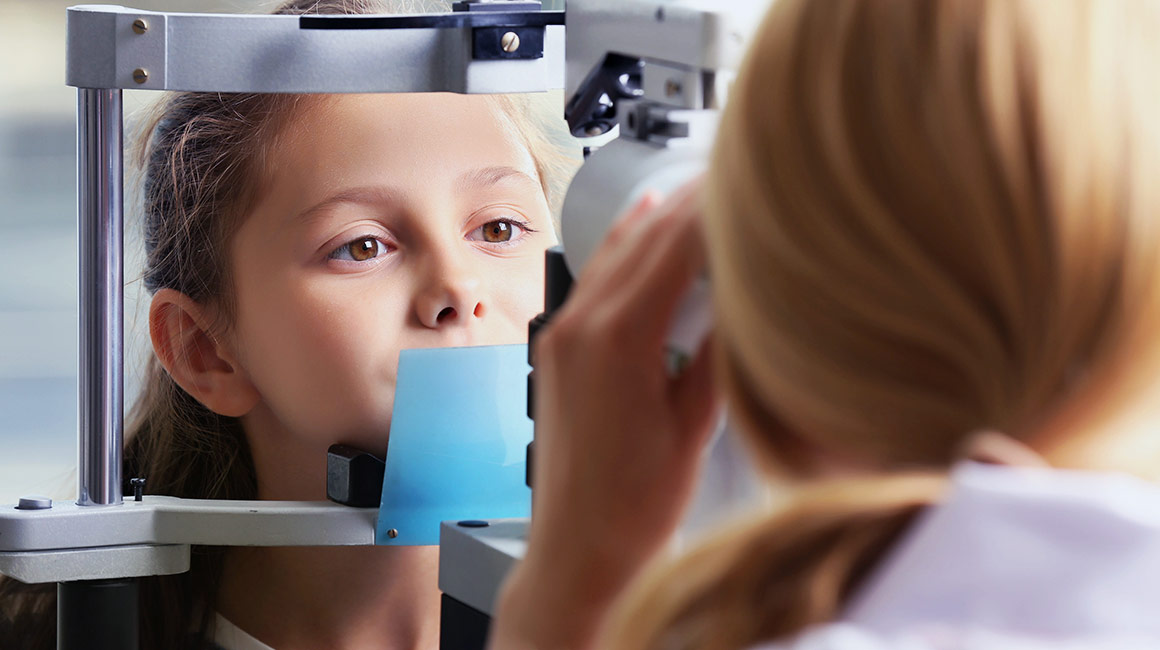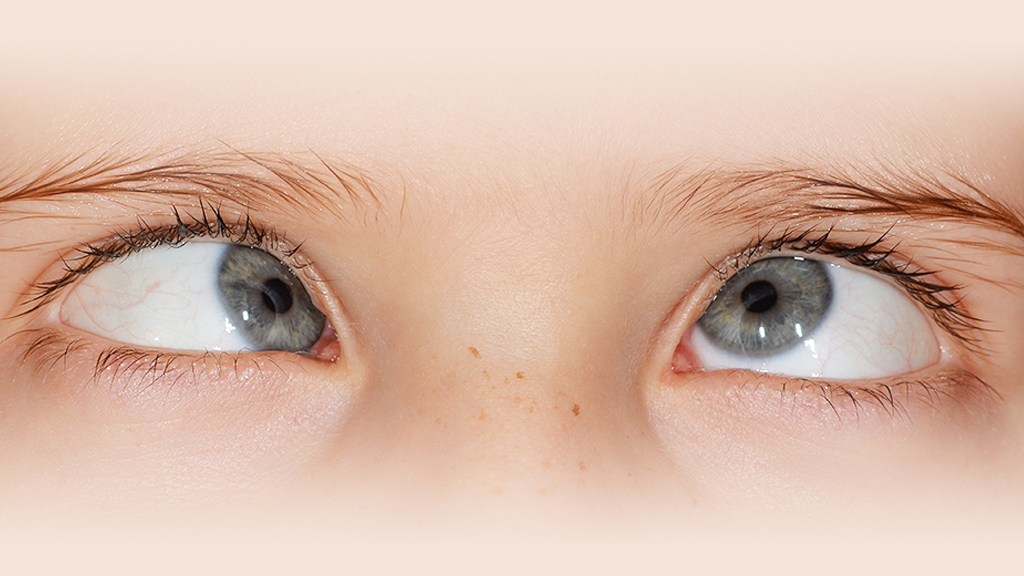The retina is the sensory membrane that lines the inner surface of the back of the eyeball. It’s composed of several layers, including one that contains specialized cells called photoreceptors.
There are two types of photoreceptor cells in the human eye — rods and cones.
Rod photoreceptors detect motion, provide black-and-white vision and function well in low light. Cones are responsible for central vision and color vision and perform best in medium and bright light.
Rods are located throughout the retina; cones are concentrated in a small central area of the retina called the macula. At the center of the macula is a small depression called the fovea. The fovea contains only cone photoreceptors and is the point in the retina responsible for maximum visual acuity and color vision.

Retina Function
Photoreceptor cells take light focused by the cornea and lens and convert it into chemical and nervous signals which are transported to visual centers in the brain by way of the optic nerve.
In the visual cortex of the brain (which, ironically, is located in the back of the brain), these signals are converted into images and visual perceptions.
Retina Problems
There is a wide variety of retina problems, conditions and diseases. Here is a short list of the more common retina problems:
Macular degeneration: Age-related macular degeneration (AMD) is the most common serious, age-related eye disease, affecting 9.1 million Americans. And the prevalence of AMD — which affects one in 14 Americans over age 40 and more than 30 percent of seniors over age 75 — is increasing as the U.S. population continues to age.
Diabetic retinopathy: One of the devastating consequences of diabetes is damage to the blood vessels that supply and nourish the retina, leading to significant vision loss.
Macular edema: This is an accumulation of fluid and swelling of the macula, causing distortion and blurred central vision. Macular edema has several causes, including diabetes. In some cases, swelling of the macula can occur after cataract surgery.
Central serous retinopathy: This is when fluid builds up under the central retina, causing distorted vision. Though the cause of central serous retinopathy (CSR) often is unknown, it tends to affect men in their 30s to 50s more frequently than women, and stress appears to be a major risk factor.
Hypertensive retinopathy: Chronic high blood pressure can damage the tiny blood vessels that nourish the retina, leading to significant vision problems. Risk factors for hypertensive retinopathy are the same as those for high blood pressure, including obesity, lack of physical activity, eating too much salt, a family history of hypertension and a stressful lifestyle.
Solar retinopathy: This is damage to the macula from staring at the sun, which can cause a permanent blind spot (scotoma) in your visual field. The risk of solar retinopathy (also called solar maculopathy) is greatest when viewing a solar eclipse without adequate eye protection.
Detached retina: A retinal detachment — a pulling away of the retina from the underlying choroid layer of the eye that provides its nourishment — is a medical emergency. If the retina is not surgically reattached as soon as possible, permanent and worsening vision loss can occur.







